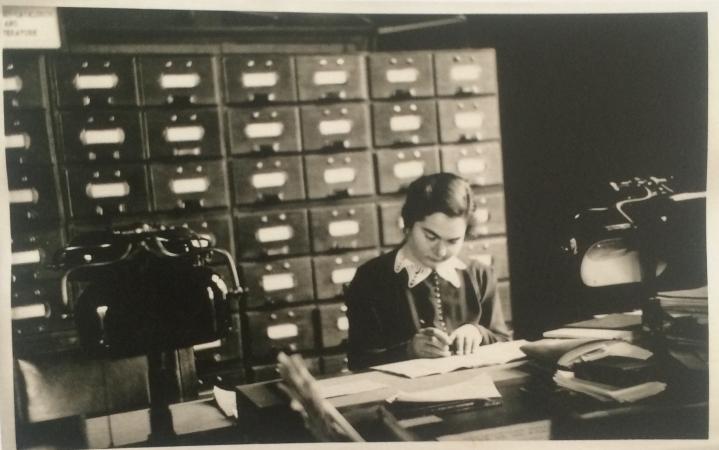This article will provide information on events in the surrounding area of the Peace Palace during the Second World War. A number of sources have been consulted to write this article. This is very much appreciated. Special thank you to Jacobine Wieringa for all aid and assistance.
Resistance and support
Through a number of employees, the Peace Palace was indirectly involved in the resistance. Besides Theodor Max Chotzen, Cock van Paaschen[12] was also active in the resistance. His mother was the head of housekeeping in the Peace Palace. And a young girl, Jos Gemmeke.[13]
Together these two printed the illegal paper “Je Maintiendrai” on the stencil machine of the Peace Palace. The machine was located in the basement but had to be moved to the attic every Friday, because there was a risk that the building’s keeper would hear it [14]. It is unclear if the board of directors or the other staff members knew about the use of the stencil machine.
After the PCIJ departed for Switzerland in July 1940, only the Dutch staff were left behind in The Hague to represent the interests of the court. The Carnegie Foundation continued its work in the war period and the library remained open to an increasing group of visitors. The fact that the reading room was heated could be part of the explanation.
During the war years, the library and Mr. Ter Meulen provided support to interned persons and refugees in a different manner; by delivering books. One of the people who received this aid was Mr. Karl Freudenberg[15], a German Jew with an interest in Hugo de Groot (Grotius). He had fled to the Netherlands in 1939 but was incarcerated in Camp Westerbork. Unfortunately, Mr. Ter Meulen had to halt this service in 1941.[16]
Guided tours to German soldiers
Guided tours are a part of the Peace Palace. During the Second World War this was already the case. During the war there have been a number of tours for German soldiers; “soldiers” were charged 15 cents while “officers” were charged 25 cents for these tours.
Tours were arranged through different organizations; the Bureau Vreemdelingenverkeer en Toerisme (Bureau Foreigners Traffic and Tourism) and the Departement van Volksvoorlichting en Kunsten, Afdeling Kulturele Propaganda (Department of Public Information and Arts, Section Cultural Propaganda).[17]
Article by C. van Tol
Picture of Ada Belinfante, Jewish staff member of the Library, who fled to England in May 1940.
[12] Wikipedia – Cock van Paaschen
[14] De laatste Vrouwelijke Ridder. – Aanspraak. Maart 2009, p. 4-8
[15] Karl Freudenberg (1892-1966) Enzyklopädie Medizingeschichte. 2011, p. 439
[16] Bouwen aan Vrede : Honderd haar werken aan Vrede door Recht. 2013, p. 131
[17] See Dossier Rondleiding Duitsche Militairen 1940-1945. Archives Carnegie Foundation
